Every summer thousands of youths flock to 4-H camp, a weeklong experience of meeting new friends and learning new skills through hands-on activities. This year the Delaware County, Ohio, camp wanted to expand its offering in science, technology, engineering and math (STEM). This was made possible by using a Bare Conductive Touch Board and Bare Conductive Electric Paint donated by SparkFun.
The concept was to get youths age 8–13 involved with making a conductive mural representing the camp’s theme. The mural was designed prior to arriving at camp to ensure campers had a chance to paint, wire and program the touch board.
Making the Mural
Once at camp, participants were able to choose which portion of the project they wanted to work on: painting, wiring or programming/sound recording. The painting team spent two days filling in the background to the mural with vibrant acrylic colors. They also did some touch-up with the black Bare Conductive paint.
The mural has 12 separate conductive images, as shown below (before and after painting): toucan, tropical bird, tiki man, palm tree, hut, sugar cane, flowers, double leaf, single leaf, words, volcano and sun.
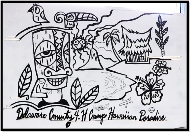
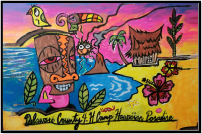
The wiring team was put in charge of connecting each of the 12 painted images to the Bare Conductive Touch Board using conductive copper tape, bare copper wire and color-coded alligator clips. The wiring team learned about circuits and had to map out how they were going to wire the mural without having any overlapping bare copper.
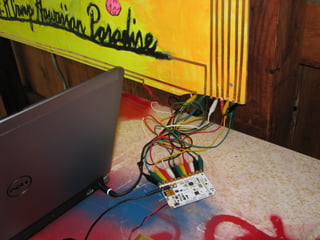
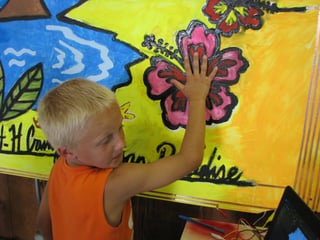
The third group was in charge of coming up with sounds for each of the images and recording and editing them in AudioDirector. They saved 12 unique sounds to the microSD card in MP3 format.
The painting, wiring and programming/sound recording groups then came together to test their finished interactive mural, and 10 of the 12 images produced sounds right away. The other two didn’t seem to be working, so the sensitivity was increased using Arduino.
The youths who participated in this creation process were asked to present the mural board at one of the camp meals and to demonstrate how it worked to the campers who worked on other projects. The campers involved in the mural were able to answer questions regarding how it worked and what they did to help create it. This was a great opportunity for students to teach other students.
This mural was used once more at a camp with 5- to 8-year-olds who also used Makey Makeys donated through SparkFun’s Community Partnership Program. It will now be totally remastered for another camp in August.
This project gave youths an opportunity to explore technology and use their creativity to make an interactive mural others can enjoy!
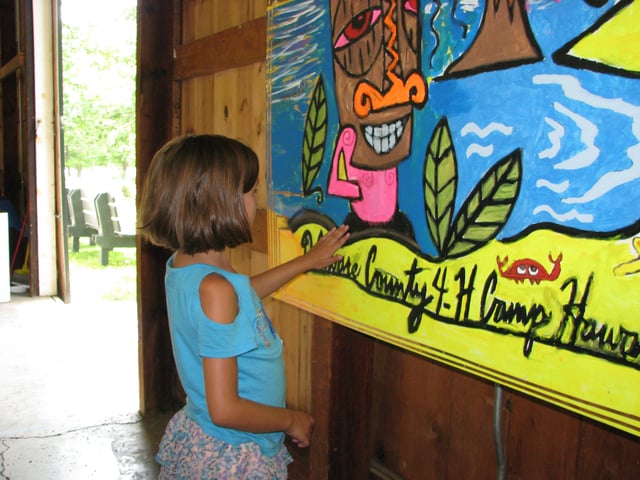
Carol Hamilton is a Program Coordinator for Ohio State University Extension in Delaware County. She grew up on a large swine operation and was very active in 4-H and FFA. These organizations taught her many life skills that she uses today, including the ability to wire houses, lay flooring and bake a mean cheesecake! Carol has spent time studying food science and crop science in Ghana, West Africa. She holds a bachelor’s degree in Food Science and Technology from Ohio State University and is currently working on a Master of Science degree in Agriculture and Extension Education. Carol and her husband met while volunteering for the Ohio Military Kids organization and love to spend time together in the great outdoors.

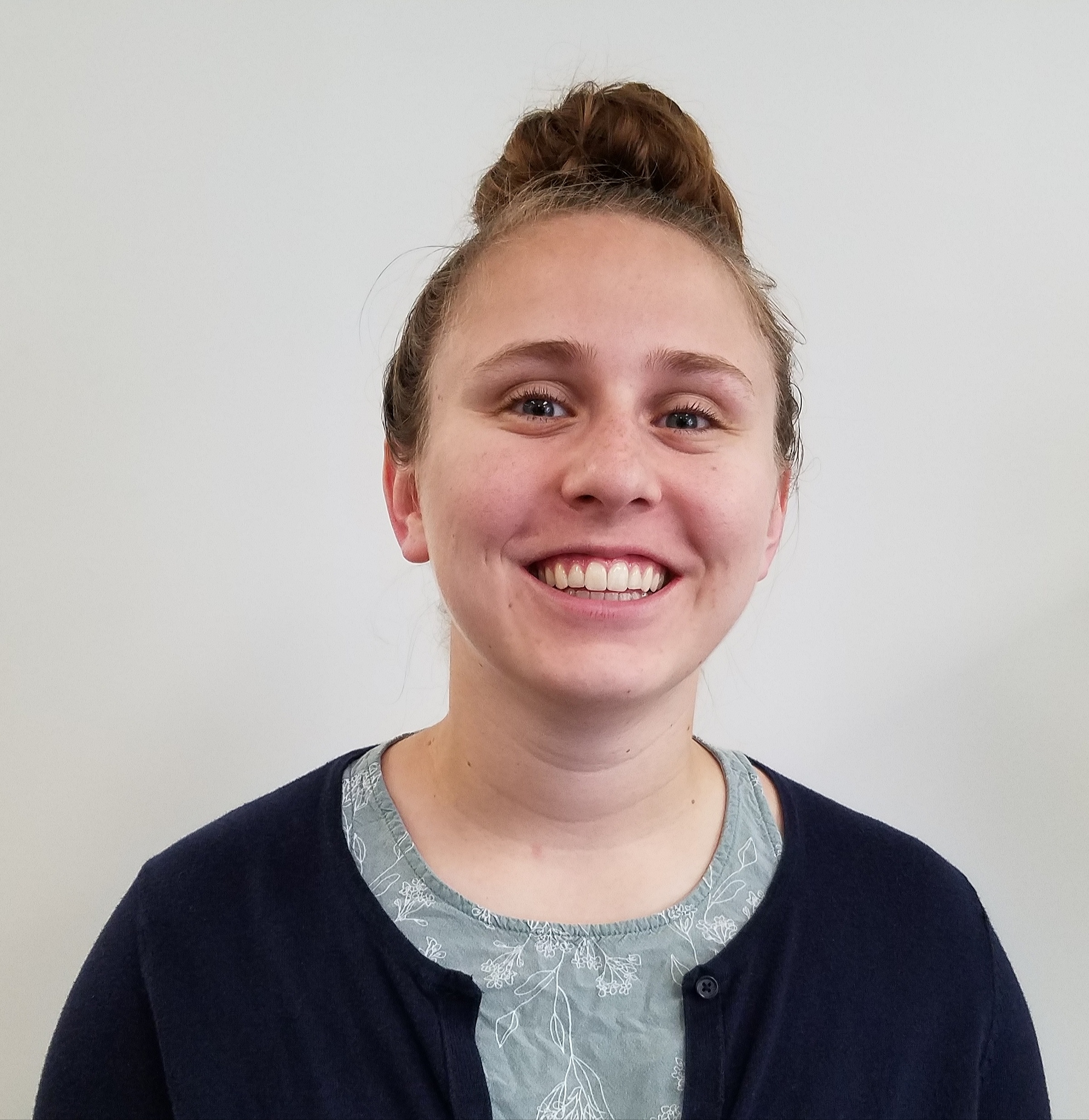
student projects, Makey Makey, Guest Post, programming, basic circuits, Community Partnership Program